It’s a blooming miracle.
At the fortress-like compound that was the world headquarters of the Jehovah’s Witnesses for almost half a century, flowering trees will burst forth with blossoms when spring arrives. Purple perennials will show their true colors. Passersby will be able to see Mother Nature put on a show at the formerly closed-off complex.
This is the work of landscape architecture firm Terrain-NYC, which tore down an eight-foot wall that hid the Brooklyn Heights property from residents and tourists strolling down the street to nearby Brooklyn Bridge Park.
“When we first walked the site, the entire campus was essentially either walled or gated off from the street and the neighborhood,” Terrain-NYC Founding Principal Steven Tupu told the Brooklyn Eagle in an interview with him and Terrain-NYC Senior Landscape Architect Maggie Condon. “The campus had been locked up and cordoned off and disconnected from the neighborhood for so long,” Tupu said.
The landscape designers created 11 garden spaces, some of them multi-level, with lush plantings, custom-designed planters and custom, built-in timber seating.The job was part of a major makeover of the Watchtower’s former home base into an office and retail complex called Panorama.
Terrain-NYC’s goal was “connecting these buildings, for the first time in 50 years, to their streets, to their neighborhood and to the dynamic neighborhood that’s changed around them over the last 50 years,” Tupu said.
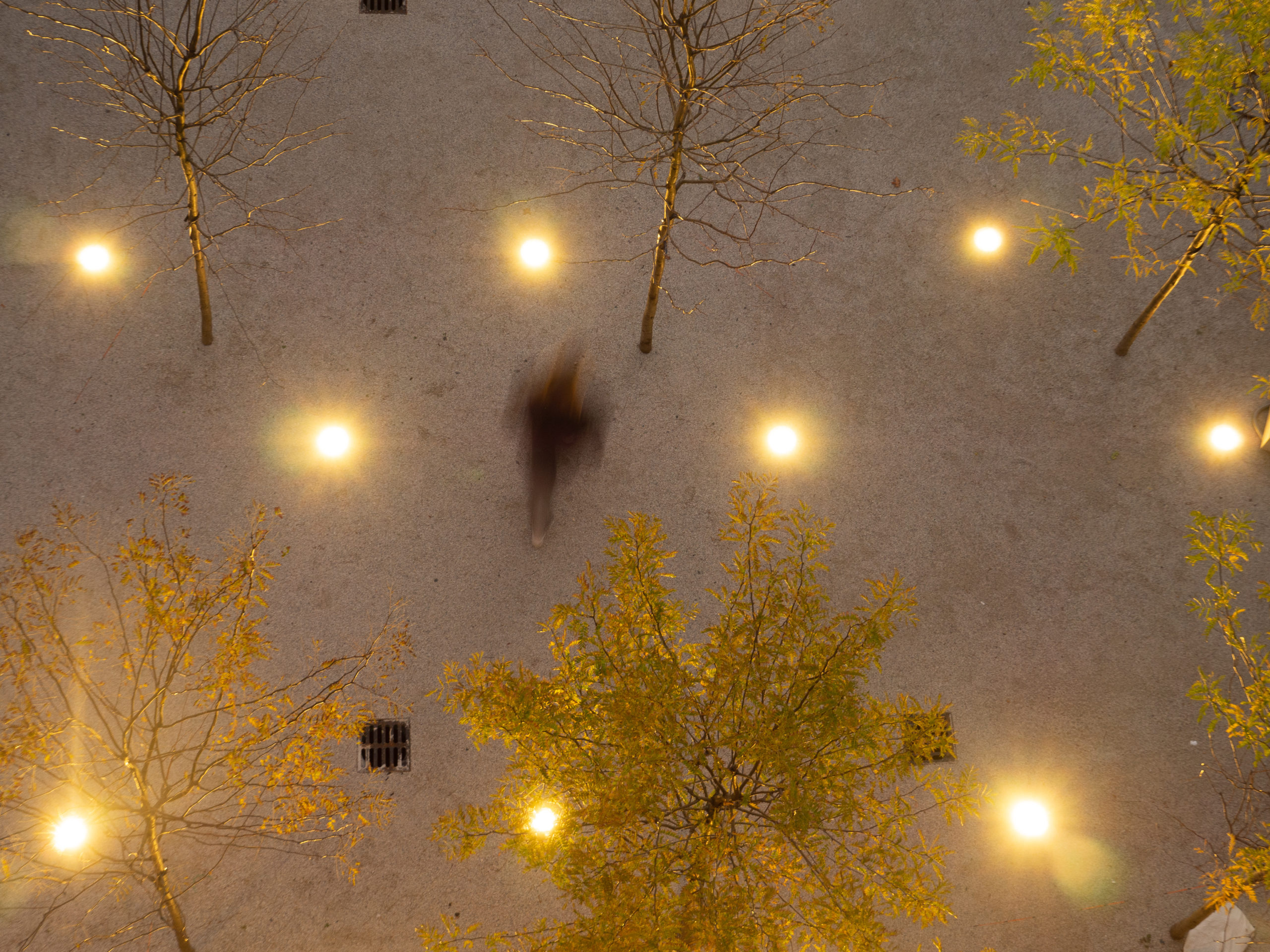 This glimmering grove can be found behind 58 Columbia Heights at the Panorama complex. Photo: Joe Norman/Terrain-NYC
This glimmering grove can be found behind 58 Columbia Heights at the Panorama complex. Photo: Joe Norman/Terrain-NYC
Property owner Columbia Heights Associates, which is a joint venture of CIM Group and LIVWRK Holdings, just released photos of Terrain-NYC’s newly created gardens as it carries out a leasing campaign for the property. Tupu and a colleague, Joe Norman, took the pictures. Panorama has more than 635,000 square feet of office space, more than 35,000 square feet of retail space and more than 15,000 square feet of hospitality space.
Inspired by the Jardin des Tuileries
The most dramatic photo Panorama’s owner released depicts a staircase that extends from Columbia Heights all the way down to Furman Street, just outside 1 Hotel Brooklyn Bridge and Brooklyn Bridge Park. The photo also shows decks where people can stand and look at a curved brick wall that resembles a preserved ruin with trees growing beside it. And there’s a grove of trees with artfully placed lighting.
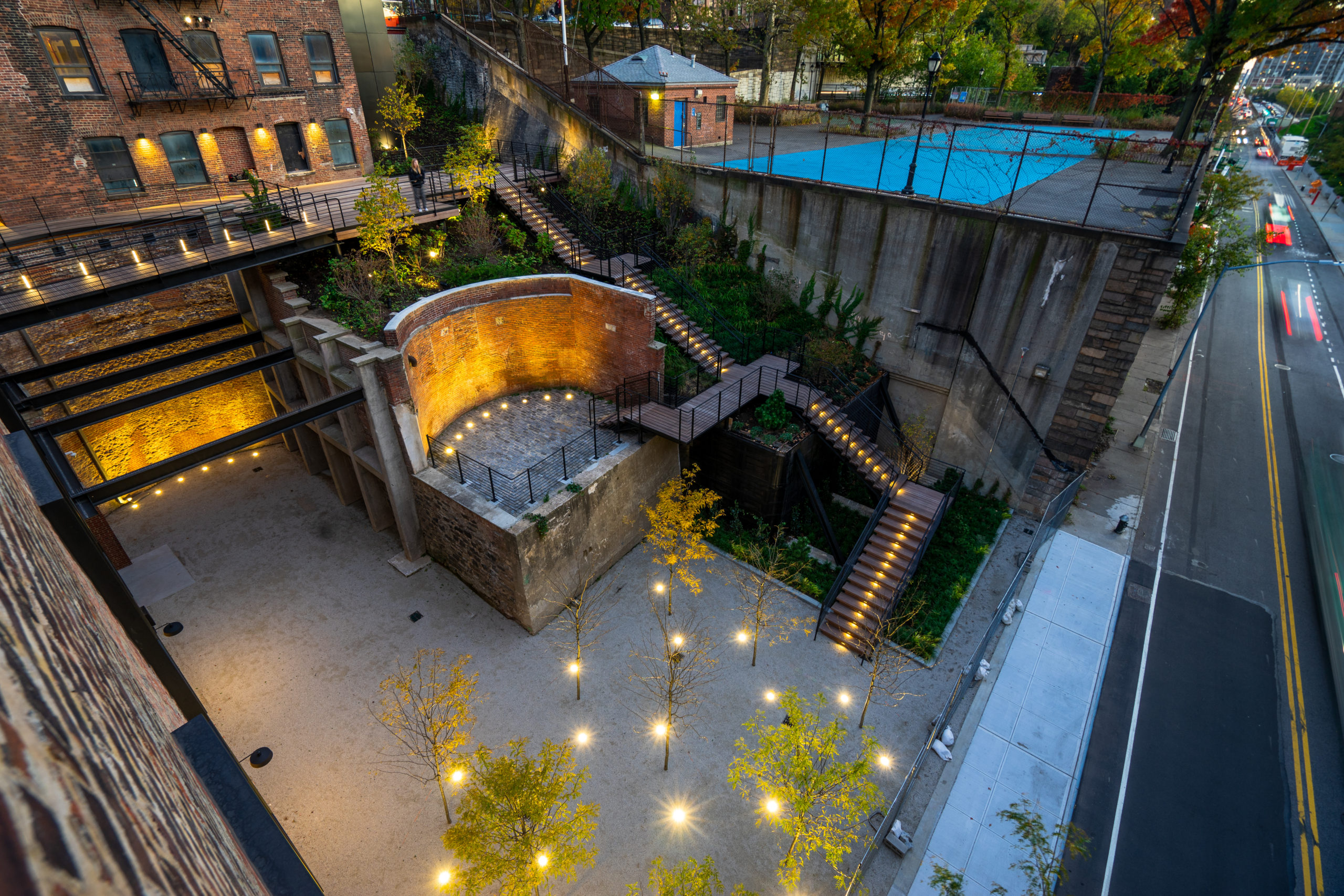
Along the staircase, there are platforms for people to step aside and look at the landscape.
The space is located behind 58 Columbia Heights, a building at the top of a steep hill. Panorama’s buildings are lined up on either side of the street.
“This is a jogging-running hill. This is where all the CrossFit maniacs in Brooklyn Heights come down to do their training,” Tupu said.
Four Panorama buildings, namely 58 Columbia Heights, 50 Columbia Heights, 55 Furman St. and 30 Columbia Heights, have facades that face Brooklyn Bridge Park and the East River. The front of the fifth building, 25 Columbia Heights, faces dead-end Vine Street. Hillside Dog Park is on the other side of Vine Street.
Terrain-NYC drew inspiration for the grove of trees from the Tuileries Gardens in Paris, a grove at Lincoln Center and Paley Park on East 53rd Street in Manhattan.

The main inspiration for the landscape architects’ choices of what should grow behind 58 Columbia Heights and all Panorama’s outdoor spaces was native trees and plants that once grew on the slopes of Brooklyn Heights and along the Brooklyn waterfront, Condon said.
The landscape architects planted saucer magnolia trees, which have rich pink flowers, and birch trees throughout the Panorama complex. The lineup of plantings also includes serviceberry (whose formal name is amelanchier canadensis) and redbud trees, which are both flowering trees.
Perennial plants will be in flower from May through the fall.
Farewell to the Watchtower sign
The Watchtower sold the Columbia Heights compound to the developers for $340 million in 2016, city Finance Department records indicate. The religious organization was in the process of liquidating its local property portfolio because it was moving its world headquarters to upstate Warwick, New York. Watchtower property sales in Brooklyn Heights and DUMBO added up to at least $2.19 billion, the Eagle recently reported.
The Brooklyn Heights headquarters had an iconic red electric sign on its rooftop that said “Watchtower.” After the Jehovah’s Witnesses moved out of the complex, the sign went with them.
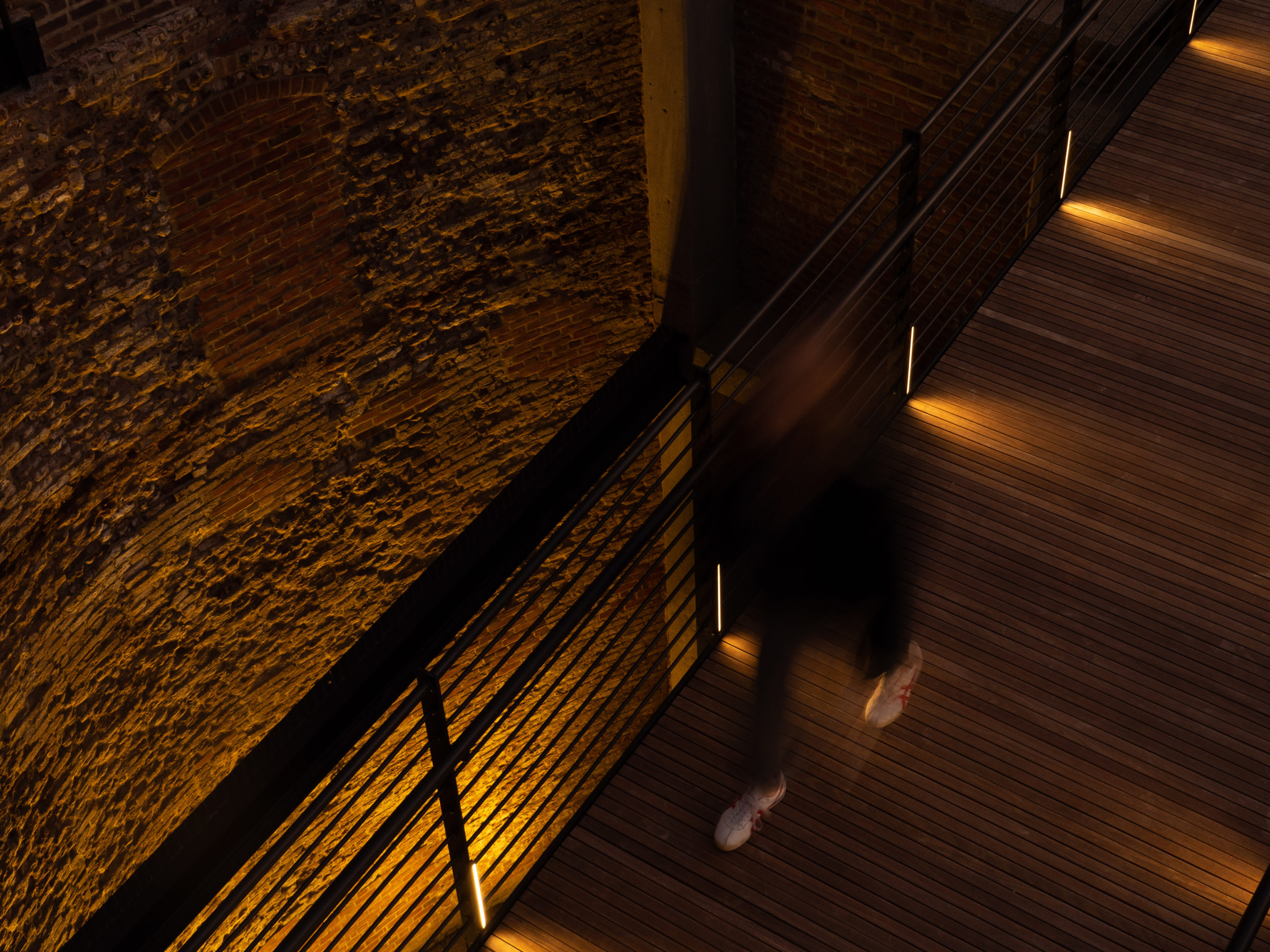
Condon recalled that at Terrain-NYC’s first meeting with CIM Group, “we asked one question — ‘When that Watchtower sign comes down, what will be the building’s identity? And what is the new identity, and how can we help you create it?’
“That sign was seen from Manhattan, from the Brooklyn Bridge, from the water taxis and from the street. How can we do that with landscape? How can we connect the buildings from afar, and from the street, with our landscape so people understand them as a unit, as a campus?” Condon said. “And that became our mantra throughout.”
‘Relics and historic structural elements’
Another eye-catching Panorama photo shows a garden with wooden seating at the entrance to the office space at 30 Columbia Heights. When the Jehovah’s Witnesses owned the complex, this garden’s location was hidden from the sidewalk by the eight-foot-high wall that’s mentioned at the beginning of this story.
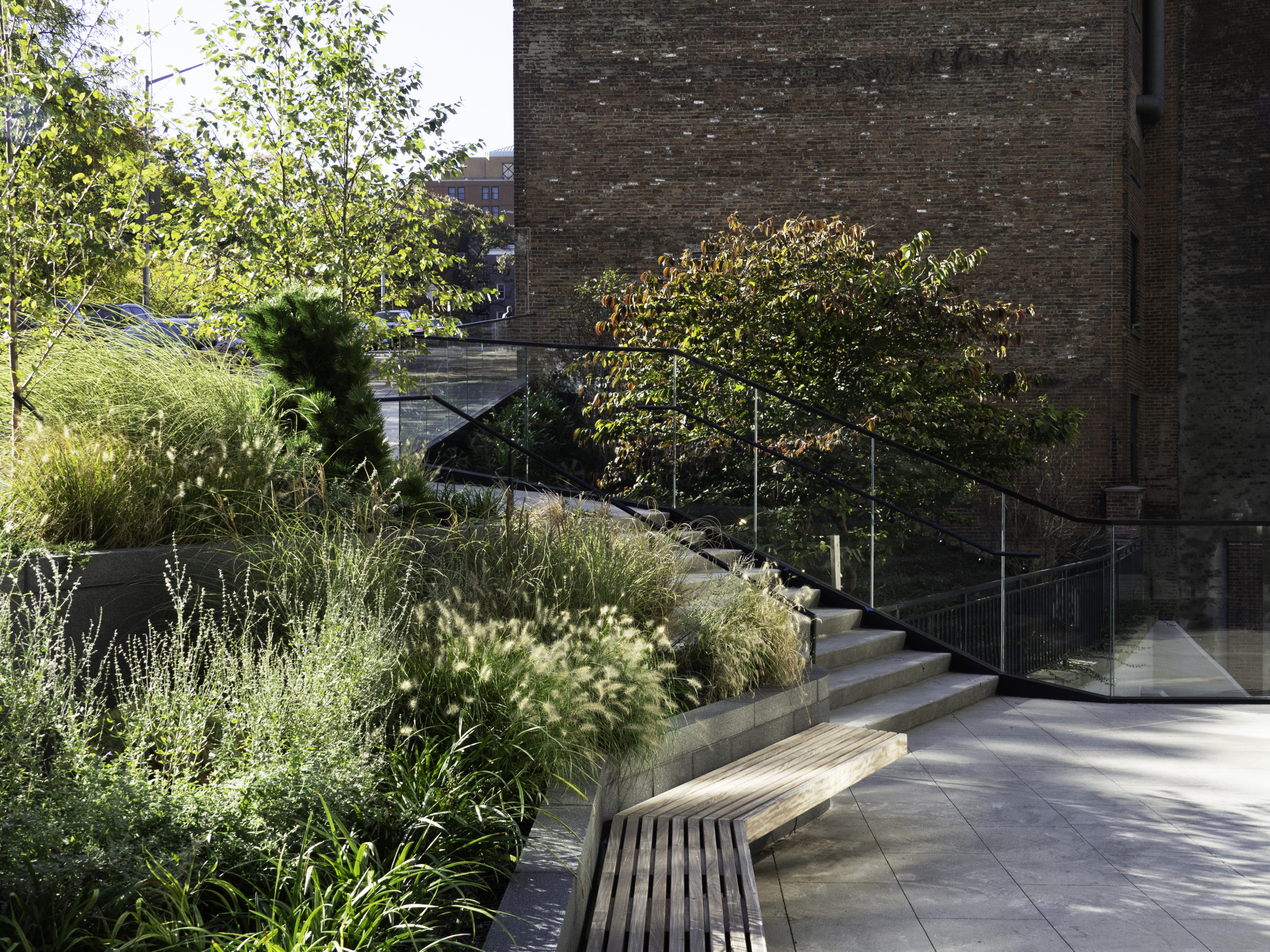
Plantings in this spot include Russian sage — which has purple flowers — grasses, vines and viburnum trees. Part of the building that’s next to the garden has a glass facade instead of masonry walls, so people indoors will get an eyeful of nature.
Three grasses Terrain-NYC planted throughout the Panorama complex are panicum, fountain grass (whose formal name is pennisetum) and maiden grass.
Another photo shows a seating area beside the entrance stairs of 25 Columbia Heights, the building that faces the dog run. These seats are “little bleachers” where you can make a call or have a cup of coffee, Tupu said.
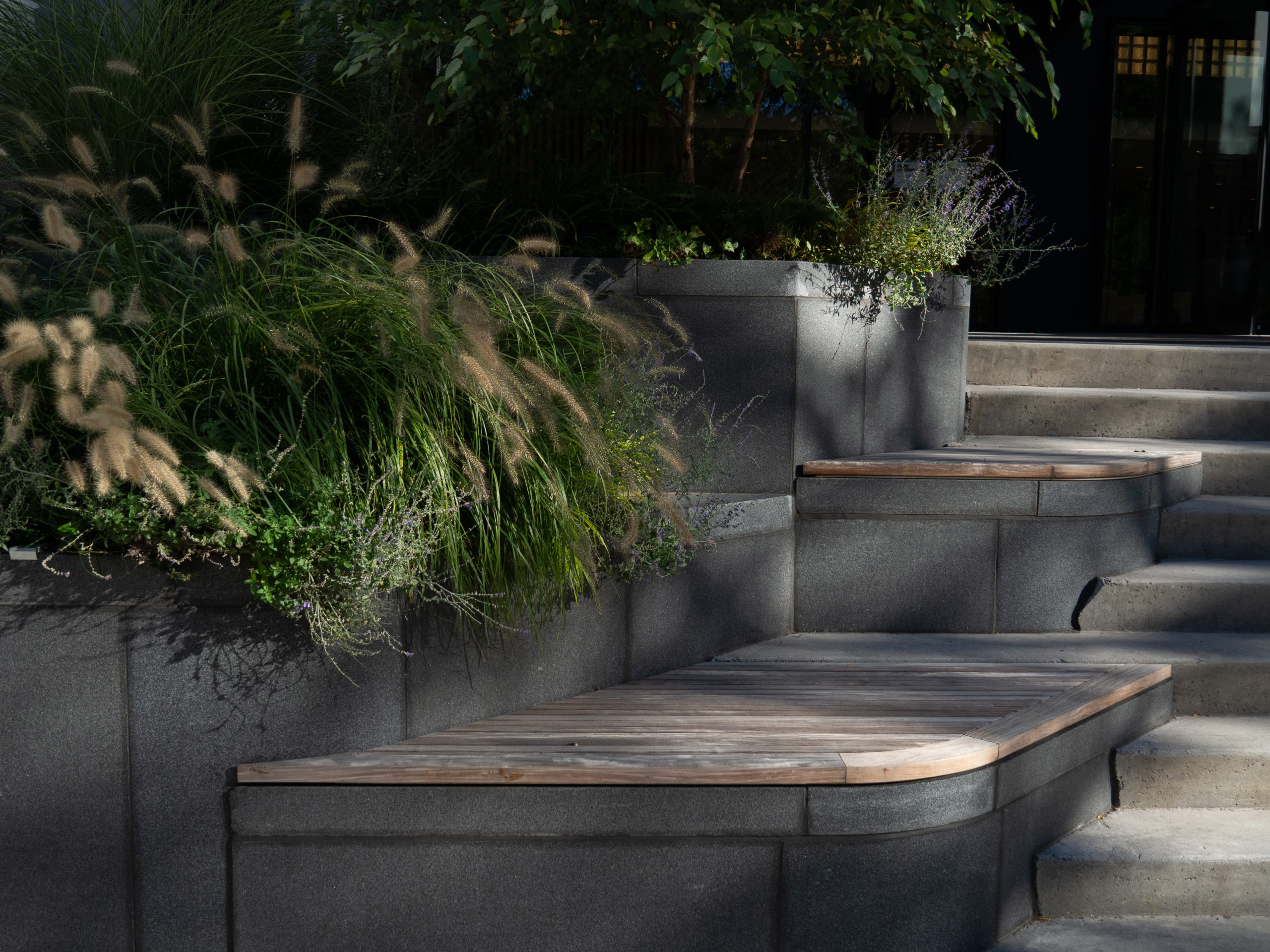
One of the challenges the Panorama landscaping project presented was how to connect the campus’s five buildings, which are all at different elevations, without using ramps and tons of stairs, he said.
When Terrain-NYC started designing the complex’s landscaping, “we realized there all these incredible historic structural foundations of buildings, these unique brick arches that actually run underneath a lot of these buildings that were essentially forming the retaining wall edge,” Tupu explained.
This presented another challenge: “How can we craft a landscape that brings people down in through these relics and these historic structural elements? And how can we reveal this incredible history and yet make it accessible and create something that’s really a unique experience to the site?” he said.
Collaboration was essential
Another photo shows spotlights glowing in the grove behind 58 Columbia Heights. This lighting was the work of one of Terrain-NYC’s collaborators, lighting designer One Lux Studio.
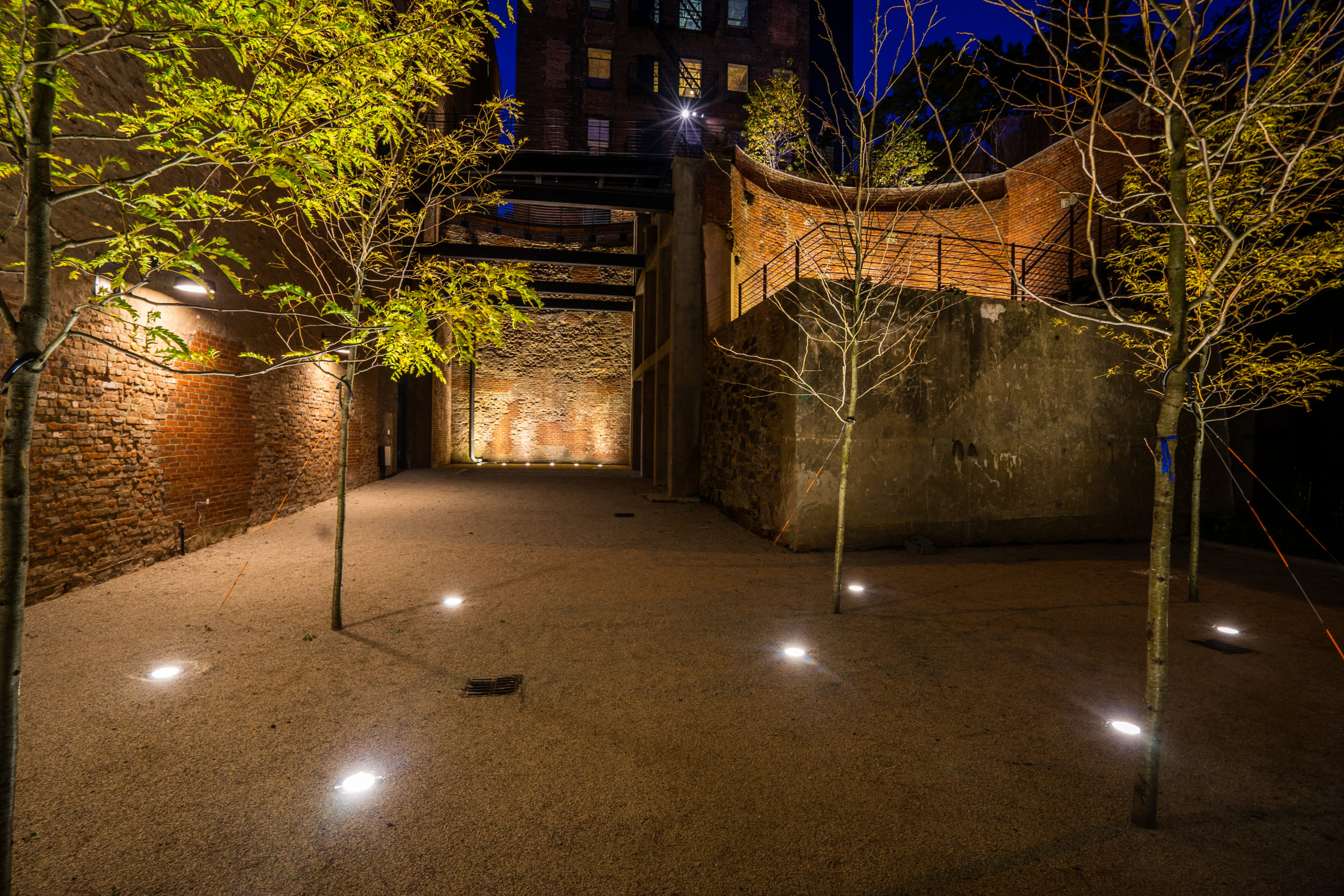
“They made our design come alive at night,” Condon said. “Look at what they did with the old brick walls. They took the old and the new and the vegetation and just made this a magical place.”
She also gave a shout-out to Don Friedman of Old Structures Engineering, which excavated a hillside to install the staircase behind 58 Columbia Heights.
And Gensler, the architecture firm in charge of Panorama’s makeover, was “a real partner” in creating a terrace behind 30 Columbia Heights, Condon said. Gensler designed glassy guardrails so visitors can stand at the edge of the space and take in the view of the Brooklyn Bridge, Brooklyn Bridge Park and 1 Hotel Brooklyn Bridge.
If you liked this story, read about Brooklyn’s most photographed street, which is a few blocks away from Panorama.